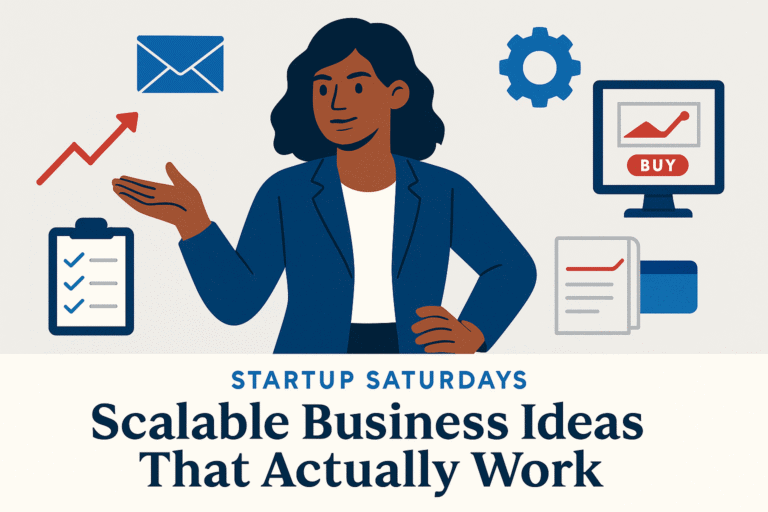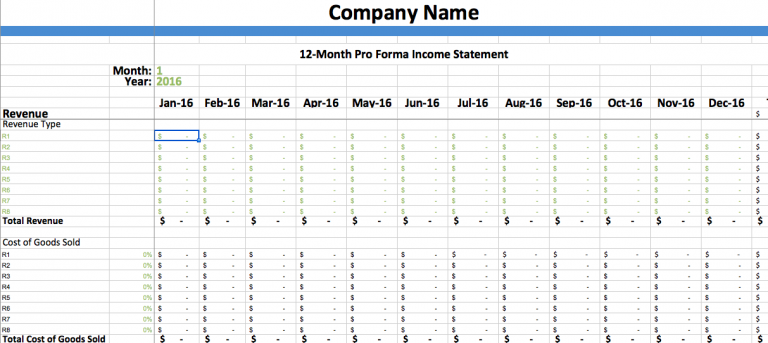Startup Saturdays
When you set up automation early for a stronger launch, you do more than save time—you set the tone for the kind of business you’re building. Instead of scrambling to keep up with every new customer, you’re welcoming them into a system that already works. Instead of losing momentum between marketing pushes, you’ve got steady, behind-the-scenes activity that keeps your audience warm.
And if you’re starting your business while still holding a full-time job, automation isn’t just a nice-to-have—it’s the only way to keep your launch from stalling before it even gets off the ground.
I know the temptation to wait. In the first chapter of Backbone America, I told myself I’d “set up systems later.” But “later” turned into weeks of late-night scrambling, tasks done twice because I lost track, and opportunities I didn’t even know I’d missed until it was too late. I was spending my best energy on admin and my leftover scraps on growth—and the business reflected that.
When I relaunched years later, I came in with a different mindset. I automated what I could before the launch even happened, so when things picked up, my time and attention could go toward building momentum—not plugging leaks. That shift didn’t just change my schedule. It changed the trajectory of the business.
The Cost of Waiting to Automate
A lot of new founders tell themselves, “I’ll automate when I’m bigger.” On the surface, it makes sense—you don’t want to spend time or money setting up something for a business that’s still finding its footing. But waiting has a price.
The cost shows up in small ways first.
Missed follow-ups. Someone downloads your freebie or reaches out through your contact form, but because you’re busy, they don’t hear from you for days. By then, they’ve moved on.
Inconsistent delivery. One client gets a beautifully prepared welcome packet, another gets a short email with a link, another gets nothing because you were distracted.
Burnout before growth. You’re already stretched thin trying to serve clients, market your offer, and handle admin. Adding more customers without streamlining is a recipe for exhaustion.

These aren’t just “new business growing pains”—they’re early cracks in the foundation. And if you let them solidify, they become part of how you operate.
When I first launched Backbone America, I didn’t realize how much these little cracks mattered. I’d respond to leads when I “had a minute,” onboard new clients from scratch every time, and keep all my publishing steps in my head instead of a system. It felt normal—until I realized my business wasn’t moving forward. Leads slipped away. Opportunities for repeat work vanished. Every week, I was working hard but going in circles.
When I relaunched with automation, the difference was night and day. Leads got an immediate, thoughtful response even if I was asleep. Onboarding was the same for every client—clear, professional, and fast. Blog posts went live on schedule without me manually hitting “publish” at 6 a.m. That consistency didn’t just make me look polished—it freed up hours I could put into real growth work.
How Early Automation Shapes Your Business Model
Every business develops habits in its first months. If those habits are built on “doing everything manually,” that’s the pattern you’ll keep—even when it’s holding you back.
Automating from the start forces you to design your processes. You have to think through each step—what happens first, what happens next, what you want the customer to see or receive. That clarity is powerful.
Here’s how early automation shapes your business model:
1. It defines your customer experience.
If you decide early that every new customer gets a welcome email, an introduction to your services, and a clear next step within minutes of signing up, that becomes your standard. Customers know exactly what to expect—and that predictability builds trust.
2. It creates natural scalability.
When your processes run without you doing each step manually, you can serve more people without doubling your hours. A single automated onboarding flow works for 5 clients or 50.
3. It influences your pricing and positioning.

For example, in my relaunch, I automated blog publishing using a content calendar, pre-set formatting, and scheduling tools. That meant I could plan a month of posts in one afternoon, write my posts ahead of time and not think about them again until it was time to review performance. Without that, I’d be spending hours each week just to keep content going. The automation didn’t just save time—it allowed me to be more strategic about what I was publishing and when.
The same was true for lead nurture. Automating that sequence meant every new subscriber got the same warm, consistent introduction to my brand. By the time we spoke directly, they already knew my style, my values, and the kind of help I offered. That’s not just convenient—it’s an asset that compounds over time.
Using Automation to Buy Back Time for Growth
The real payoff from automation isn’t just in the hours you save—it’s in how you use them.
Think about the business activities you never seem to get to:
Recording that course you’ve been talking about for months.
Reaching out to potential collaborators.
Testing a new marketing channel.
Writing a better sales page.
Those aren’t “extra” activities—they’re the ones that drive growth. But if you’re buried in repetitive tasks, you’ll never get to them.
When I automated my lead tracking and client follow-up, I gained back an entire afternoon each week. At first, I used that time for content creation—batch-writing articles and emails so my marketing stayed consistent. Later, I used it to refine offers and improve my sales process. Over time, those hours compounded into real momentum.
If you’re a product-based startup, imagine what you could do with an extra four hours a week:
Improve your packaging and unboxing experience.
Photograph your products for better marketing.
Research new suppliers or materials.
If you’re a service-based startup:
Update your proposals and pricing.
Develop a small-group version of your offer to serve more clients at once.
Create reusable resources for common client questions.
The key is to see automation not as “saving time” in the abstract, but as buying time for the work that grows the business.
Here’s a quick exercise:
Write down one growth activity you’ve been postponing.
Estimate how much time it would take to do it well each week.
Identify one recurring task you could automate to create that same amount of time.
If that’s automating invoices, scheduling social posts, or setting up an onboarding sequence, the point is the same—you’re freeing hours for high-value work.
Quick Decision You Can Make Today
 Picture your business six months from now. You’ve launched, and instead of starting each day by checking a long list of “maintenance” tasks, you’re working on things that actually grow your revenue. You’re meeting with potential partners. You’re refining offers. You’re creating content that brings in the right customers.
Picture your business six months from now. You’ve launched, and instead of starting each day by checking a long list of “maintenance” tasks, you’re working on things that actually grow your revenue. You’re meeting with potential partners. You’re refining offers. You’re creating content that brings in the right customers.
What one process could you take off your plate right now to make that possible?
It could be as simple as:
Auto-responding to new inquiries. Even a short, friendly reply with a link to learn more keeps the conversation alive until you can follow up personally.
Scheduling your next month of social content. One afternoon of scheduling means weeks of consistent posting without the daily decision fatigue.
Creating a reusable template. If you send the same type of email more than twice, make a version you can customize quickly.
These aren’t glamorous changes. They won’t make headlines. But they will build the kind of foundation that makes growth possible.
Build for the Business You Want
Setting up automation early for a stronger launch isn’t about chasing the latest software or building complicated systems before you’ve made your first sale. It’s about making intentional choices now so you’re not stuck firefighting later.
When you design your business to run efficiently from the start, you create space for the kind of work you actually want to be doing—and for the kind of life you want to be living.
I’ve lived both sides of this. I’ve run a business where every step depended on me being at my desk, manually pushing things forward. And I’ve run a business where key processes worked in the background, creating opportunities while I was on a call, traveling, or sleeping.
The second one is the only one I’ve chosen to stick with. It’s allowed me to travel the world, not worrying about time zones or if my business would collapse without me touching every corner of it. That’s the type of freedom it offers.
If you want practical, real-world strategies for launching a business that works as hard as you do—without burning you out—join my mailing list. I send high-value, transformative insights, not recycled tips or hype. You’ll get the kind of breakdowns you can act on in under an hour.






